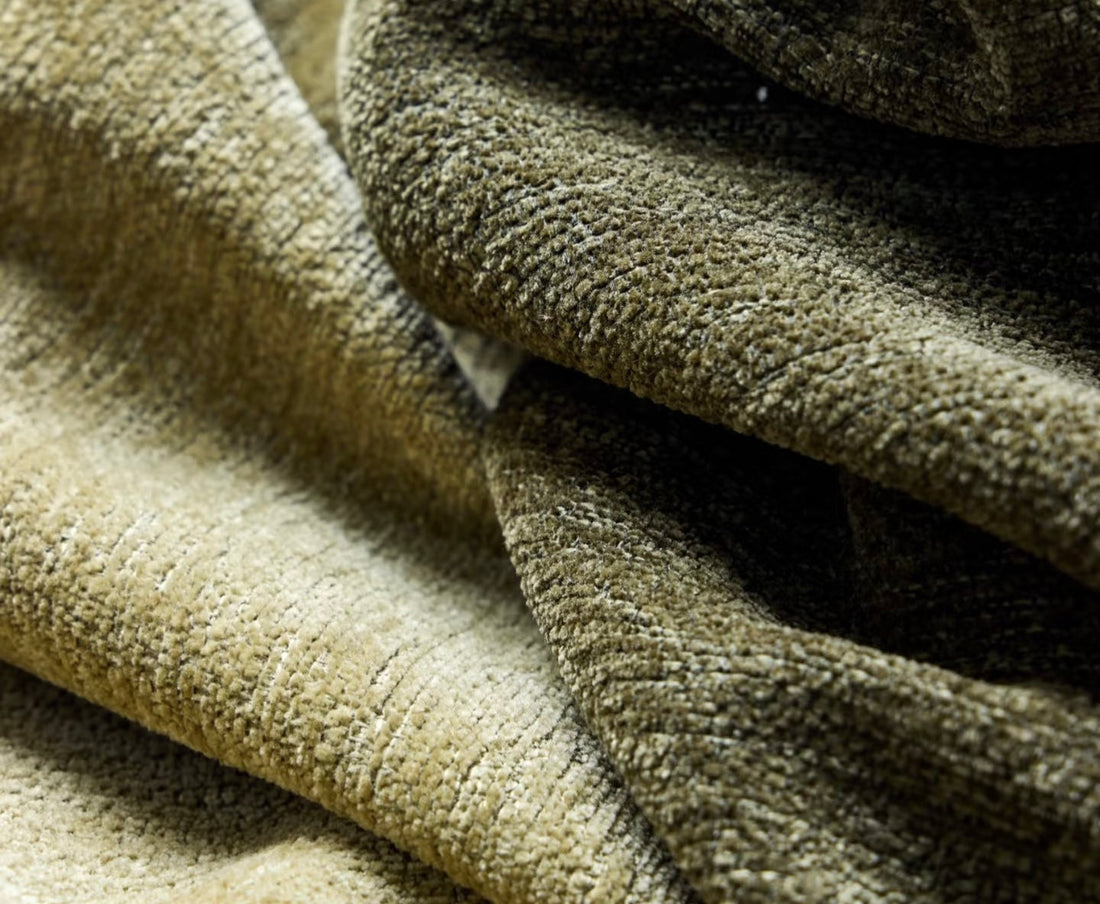
What Is Chenille Fabric? A Complete Guide to Its Origins, Uses, and Care
Chenille fabric is one of those materials you instantly recognize by touch—soft, fuzzy, and inviting.
It has a velvety texture that gives furniture, blankets, and clothing a cozy and luxurious feel. But what exactly is chenille fabric, where does it come from, and what should you know before choosing it for fashion or home use?
This guide breaks down everything from its history to its care tips.
The Origin of Chenille Fabric
The word chenille comes from the French word for “caterpillar,” which perfectly describes the fuzzy, textured look of the yarn.

Chenille fabric was first developed in France during the 18th century. Early weavers discovered that by weaving short lengths of fiber between two core yarns and cutting them to raise the pile, they could create a soft, plush surface unlike anything else at the time.
Over time, chenille spread across Europe and became popular in both home décor and apparel. Its shimmering surface, which changes color slightly depending on how light hits it, gave it a distinctive, almost velvet-like appeal.
How Chenille Fabric Is Made
The production process begins with chenille yarn. Unlike regular yarn, chenille yarn is created by trapping short lengths of fibers between two twisted core threads.
The result is a “caterpillar-like” yarn with tufts of pile sticking out in all directions. When this yarn is woven into fabric, it creates a dense, plush texture.
This unique structure is what makes chenille fabric so soft—but it is also what makes it prone to issues like shedding and pile loss.
Chenille Fabric vs. Flannel
It’s easy to confuse chenille fabric with flannel, since both are soft and warm. But they are very different in construction:
- Chenille Fabric: Made from chenille yarn with raised piles that shimmer and feel thick. Heavier, more decorative, and often used in upholstery or outerwear.
- Flannel: Usually woven from cotton or wool, then brushed to create a smooth nap. Flannel is lighter, more breathable, and widely used for shirts, pajamas, and bedding.
In short, chenille is plush and showy, while flannel is practical and cozy.
👉 For more fabric knowledge, check out our Fabric 101 series.
Common Fiber Content
Chenille fabric can be woven from a mix of materials, depending on its end use:
- Cotton: Soft and breathable, but less durable.
- Acrylic or Polyester: Adds strength, colorfastness, and elasticity, but increases static.
- Rayon: Gives sheen and drape but is more delicate.
Because many chenille fabrics contain synthetic fibers, they can be prone to static electricity, which attracts dust and lint. This is one reason chenille upholstery tends to require more maintenance than other fabrics.

Can Chenille Fabric Be Used for Clothing?
Yes, chenille fabric is used in sweaters, jackets, scarves, and even dresses. Its softness and warmth make it appealing for winter wear. However, there are some downsides:
- It sheds easily, especially when new.
- The fabric can stretch or lose shape over time.
- Static buildup makes it less breathable and prone to attracting dust.
For these reasons, chenille is more common in statement pieces and outerwear rather than everyday essentials.
Buying Tips: What to Look For
When shopping for chenille fabric or chenille-based products, consider the following:
- Fiber blend: More cotton means softer and more breathable; more polyester or acrylic means more durability but also more static.
- Density of pile: A tighter weave will shed less and last longer.
- Purpose: Upholstery fabrics are usually heavier, while apparel chenille is lighter.
- Colorfastness: Check if the fabric resists fading, especially for home décor exposed to sunlight.
Care and Maintenance
Chenille fabric needs a little extra care compared to sturdier textiles:
- Washing: Hand wash or use a gentle machine cycle in cold water. Harsh agitation can cause pile loss.
- Drying: Air dry flat; avoid high heat which can damage fibers.
- Ironing: Low temperature only, and ideally use a pressing cloth to avoid crushing the pile.
- Cutting and Sewing: Because of its pile, chenille can fray—so edges should be finished properly with serging or binding.
By treating it gently, you can extend the life and look of your chenille garments or décor.
Final Thoughts
Chenille fabric is beautiful, soft, and versatile, with a rich history dating back centuries. It adds instant warmth and elegance to interiors and fashion alike, but requires mindful care due to its tendency to shed and attract dust.
When buying chenille, always pay attention to fiber content and pile density to ensure you’re getting the right balance of comfort and durability.
For more guides on textiles and how to choose the right fabrics for your projects, explore our Fabric 101 collection.
